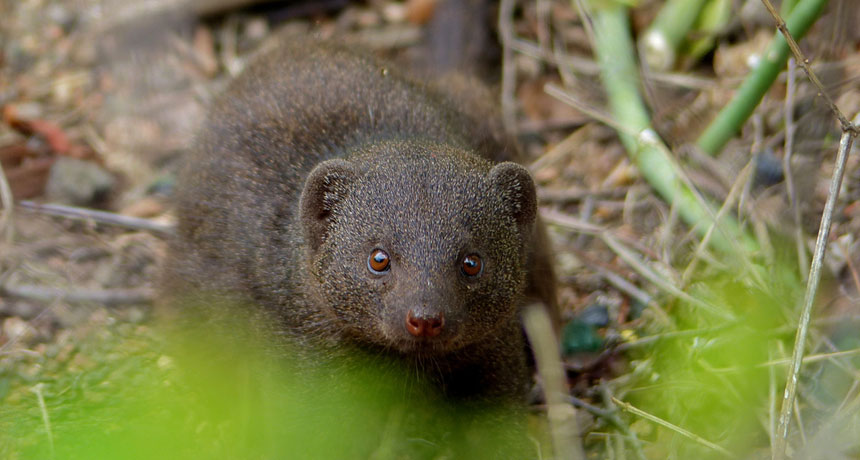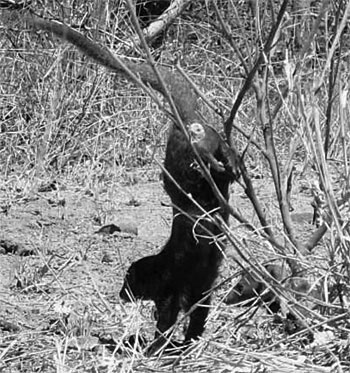For dwarf mongooses, handstands aren’t just good fun

Dwarf mongooses live in competitive groups. New research shows that handstands may play a crucial role in that competition.
Bernard DUPONT/Flickr (CC-BY-SA 2.0)
- More than 2 years ago
For a dwarf mongoose, a handstand is a crucial skill learned at an early age. “It’s funny to watch the youngsters trying to do it … almost as soon as they can walk,” says Lynda Sharpe, a behavioral ecologist at the University of Stellenbosch in South Africa. “They tend to fall over a great deal.”
But the handstand is used for more than just playing around. The animals quickly hoist their butts into the air so they can rub secretions onto vegetation, rocks and even termite mounds to mark the boundaries of their group’s territory. Transient mongooses then know not to encroach on the area, Sharpe says.
Sharpe has been studying dwarf mongooses at the Phuza Moya Private Game Reserve in northeastern South Africa, where several groups of the animals are habituated to the presence of humans. She set up an experiment to get insight into how the mongooses use the markings; she was curious whether the height of the markings, and thus the handstands, mattered. She presented mongooses with scent samples placed at 16 and 10 centimeters high and recorded what happened next. The findings appear in the July issue of Animal Behaviour.

The dwarf mongooses’ living arrangements help explain why only the females cared about the scent height. These animals live in groups headed by an alpha pair, a male and a female, their adult offspring and an immigrant male or two. Among the females, there is intense competition for that top spot. That’s because the group’s alpha pair is the one that does most of the breeding. And higher-ranking female mongooses push around lower-ranked rivals and steal their food, Sharpe says. “The higher-ranking female tends to sidle up to a victim, hip first, and gives low threatening growls. The victim immediately abandons her prey (subterranean bugs) and runs off giving a high-pitched, submissive peeping.”
Body size plays a role in that competition, and, unlike in males, scent height is a good marker of female body size. In her experiment, Sharpe only tested non-alpha mongooses. These animals need to pay attention to who is on top, Sharpe notes, and the handstand scents may be able to help them do that.






